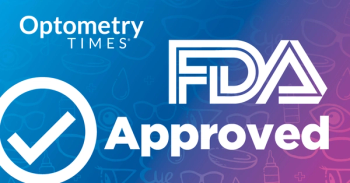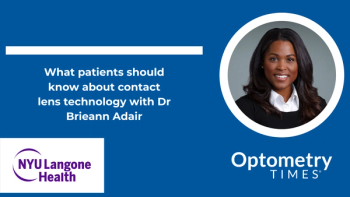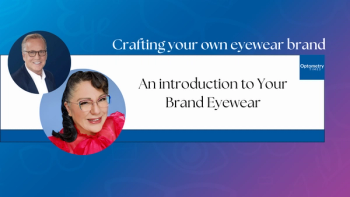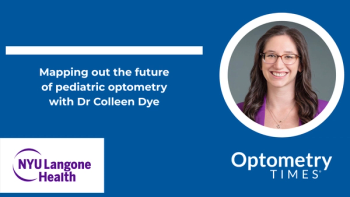
- March/April digital edition 2025
- Volume 17
- Issue 02
Q&A: The education at the 19th Annual Controversies in Modern Eye Care is a force to be reckoned with
The starry faculty has a galaxy of symposia planned for May 4, 2025.
The
If you're interested in participating in this year's Controversies in Modern Eye Care meeting, you can
Q&A with Dr Neda Shamie, cochair of 19th Annual Controversies in Modern Eye Care
Editor’s note: This transcript has been lightly edited for clarity.
Sheryl Stevenson: We are joined today by Dr Neda Shamie, one of the cochairs for this year’s 19th Annual Controversies in Modern Eye Care. Congratulations. That’s wonderful. The meeting is being held on Sunday, May 4, in Los Angeles, California. I’d love for you to take a few minutes to talk about what to expect this year. Can you walk us through the faculty lineup and what’s in store for attendees?
Neda Shamie, MD: Thank you so much for having me. I’m really excited about our upcoming meeting. It’s just a couple of months away. I’ve been involved for at least 8 years now, ever since I joined Dr Robert Maloney, who started the meeting series 19 years ago. His vision was to create a space for ophthalmologists and optometrists to collaborate and optimize patient care through open conversations. At the time, this approach was quite unique, but today, it has positioned him as a leader in the field. Along with Dr Hura, the 3 of us are strong advocates for collaborative care because patients achieve the best outcomes when their primary eye doctor and surgeon work together.
The meeting is set for May 4—so “May the force be with you.” Given that we are in Los Angeles, where Hollywood happens, we’ll have a fun Star Wars theme intertwined throughout the event.
Our sessions will feature both optometrists and ophthalmologists, ensuring that the spirit of collaboration is fully integrated into the program. Dr Hura, Dr Maloney, and I will be moderating and cohosting. Dr Maloney, who recently returned from a sabbatical studying the history of intraocular lenses [IOLs] in England, will be delivering a keynote lecture on his findings. I’ve heard his talk—it’s fascinating. I highly recommend attending, even just for that session.
Stevenson: That sounds incredible. Who else will be speaking, and what are some key sessions?
Shamie: We have an exceptional faculty lineup this year. Dr Wendy Lee and Dr Selina McGee will be discussing advances in oculoplastics, which is a rapidly evolving field with exciting new developments for patient care. I might even volunteer to be a model for some of their beautification techniques.
Dr Paul Singh, a glaucoma specialist from Chicago, is always a huge hit. He will be partnering with Melissa Tawa, OD, for 2 sessions: one covering updates on glaucoma diagnosis and monitoring, and another focused on management strategies.
For retina, we have Drs Steven Ferrucci and Luke Lindsell leading sessions on retina therapy, macular degeneration, and macular edema—essential topics for all eye care professionals.
Dr Hura and I will be copresenting a session covering all aspects of refractive surgical options, from patient selection to new innovations. We’ll discuss when to refer patients for surgery and when it may not be the best option. Another key session will focus on refractive cataract surgery, including controversies and technological advancements in [IOLs]. Dr Maloney will set the stage by discussing the history of IOLs, and we’ll then transition into the future of lens technology.
Additionally, we’ll have featured symposia diving into subspecialties like neuro-ophthalmology, retina, and glaucoma, providing insights into the latest treatment modalities and innovations. There will also be a sponsored lunch product theater for another in-depth discussion on a specialized topic.
Stevenson: It sounds like a fantastic, well-rounded program. Given the name “Controversies in Modern Eye Care,” how does that theme play into the discussions?
Shamie: Great question. Our practice is an early adopter of new technology—always after rigorous vetting for safety and efficacy. But when new innovations emerge, they often spark controversy. Is this advancement truly beneficial? Are we moving in the right direction? These are questions I ask myself every day when evaluating new options for my patients.
The controversies we discuss at this meeting aren’t about outdated treatment methods; they focus on the cutting edge. Since ophthalmology is one of the most rapidly evolving fields in medicine, we must continually assess new technology and advancements. This meeting encourages open dialogue about whether these innovations represent genuine improvements or simply new alternatives.
Stevenson: That makes a lot of sense. With faculty including both ophthalmologists and optometrists, how does this meeting support comanagement in eye care?
Shamie: Collaboration between optometry and ophthalmology is essential. Effective comanagement enhances patient care by ensuring seamless knowledge transfer, fostering innovation, and optimizing treatment outcomes. Open communication between primary eye care providers and surgeons leads to the best possible patient experiences and outcomes. This meeting reinforces the importance of that partnership.
Stevenson: Before we wrap up, is there anything else you’d like to add?
Shamie: I’m just really excited for this meeting. We’ve worked hard to create a well-rounded agenda, building on past experiences and refining the program each year. This is our third year working with PER, and they have helped elevate the meeting to the next level. The interactive nature of the event, combined with engaging discussions, ensures that attendees leave feeling inspired and equipped with new insights to bring back to their patients. I hope to see many of you there, and I look forward to exchanging ideas and keeping the conversation open.
Articles in this issue
7 months ago
A closer look at periorbital allergic dermatitis7 months ago
The contact lens follow-up factor7 months ago
The value of innovation in controlling myopia7 months ago
Addressing the root cause of dry eye diseaseNewsletter
Want more insights like this? Subscribe to Optometry Times and get clinical pearls and practice tips delivered straight to your inbox.



















































.png)


